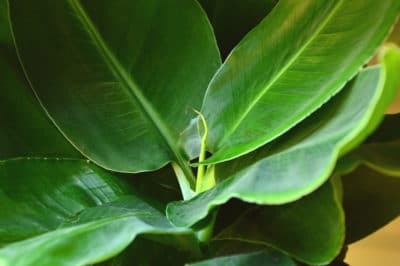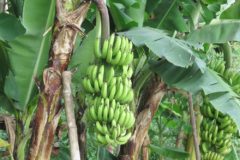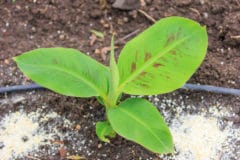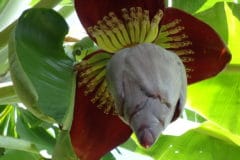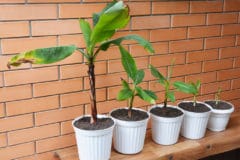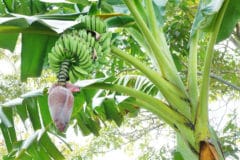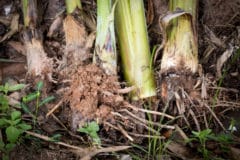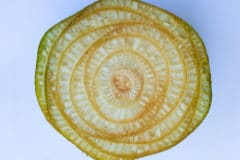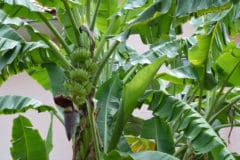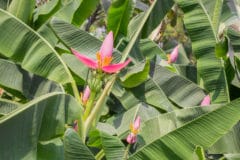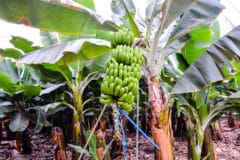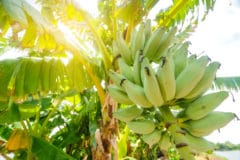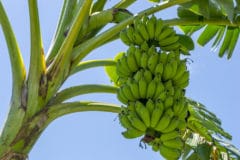Banana Habitat
In the wild, bananas are an understory plant, growing mostly in dappled shade. Strong sunlight can cause leaf burn and should be avoided. Most grow in areas of relatively high humidity, drawing nutrients from the rich litter or plant material on the forest floor. Although a few display some degree of cold hardiness, all are very sensitive to frost.
Bananas – Trees or Shrubs?
Many bananas look like a tree, with a trunk and a canopy of large leaves. In reality, thebanana is a large shrub, related to ginger and the bird of paradise flower. The leaves form a tightly packed whorl that creates a thick pseudostem. It is the pseudostem that gives some bananas the look of a tree as it simulates a trunk. Other bananas are short and shrubby.
Growing Bananas Indoors
Your chances of growing an edible banana indoors are slim. First, the edible bananas are the taller varieties that look like trees – some grow 20 feet tall. Second, they require a great deal of warmth, humidity, fertilizer and water. However, they also require sun protection. Finally, it can take almost two years to obtain ripe fruit.
Indoor Growing Conditions
For success with indoor banana plants, you must mimic their preferred conditions. Bananas grown indoors need:
- Bright indirect light – 10 to 12 hours a day.
- Lots of water.
- Temperatures between 85°F (29°C) and 95 °F (32°C).
- Very rich, loose, well-drained soil.
- Regular applications of fertilizer.
- High humidity.
Containers for Bananas
Size and drainage are the two most important criteria when choosing pots for bananas. A large plant may need a 15-gallon pot. These are not easy to move, so site them properly. Clay pots are decorative; unglazed pots drain well but they also transpire water through the side and may require more frequent watering. Plastic pots also work well.
Repotting Indoor Plants
A healthy banana plant will send up shoots and eventually outgrow its container. These suckers can be replanted for new plants; remove them soon after they emerge and repot in one-gallon containers. You can also repot the mother plant into a larger container as necessary. However, banana plants are not long-lived and will always die shortly after flowering.
